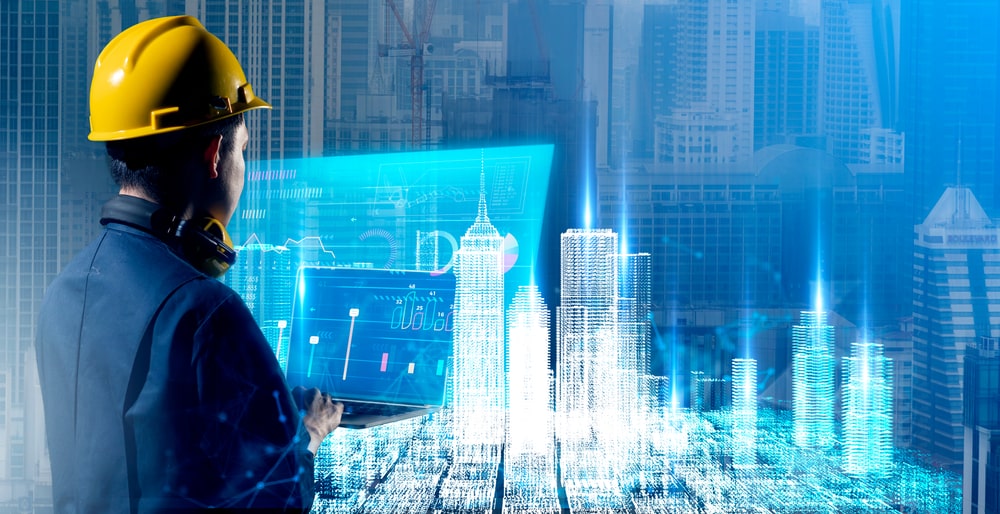Sector - skills
How Artificial Intelligence is Revolutionising Construction

Kasia Borowska is the Managing Director of Brainpool.ai, a specialist Artificial Intelligence (AI) services company powered by a global network of 500 AI experts that has worked with some of the UK’s leading construction firms on AI projects. Kasia holds an MSc in Cognitive and Decision Sciences from UCL. In this latest piece Kaisa writes about the revolution happening within the construction industry thanks to AI.
The construction industry is on a post-pandemic recruitment drive. Pre-pandemic figures reported that the UK needed to hire one worker every 77 seconds and today there’s still a shortage of skilled available workers.
That skill shortage is leading some firms in the construction industry to investigate ways to make the building process more efficient. And that’s where automation and Artificial Intelligence (AI) come in. Tasks that are frequent and high volume can be automated and machines can outperform people in terms of accuracy and speed. That’s not to say they replace people, more that AI automates repetitive tasks so that people can focus on the tasks that really matter, and there will always be human responsibility to check and confirm actions.
Artificial Intelligence would improve productivity and help to reduce the industry’s high carbon footprint, estimated to be 10% of the UK’s total CO2 emissions. Inefficiencies can be found in nearly every area of the construction ecosystem, starting from design, through to implementation, scheduling and site management and they can lead to increased costs and environmental impact, such as materials wastage, inefficient space allocation or increased pollution.
A lot of construction design processes that are currently done manually can be automated thanks to advances in Artificial Intelligence and Machine Learning. Anything that produces data can be automated to produce outcomes. It’s an area of mathematics called Operational Research, i.e. advanced mathematical models built to support complex decision-making processes. It is not a question of if, but when – the sooner we start building artificial intelligence tools that can automate some processes the better. Artificial intelligence can help the construction industry increase efficiency and reduce carbon footprint, as well as lower operational costs and overheads.
AI-based solutions are being developed to help throughout construction phases: from planning, development and permissions, through scheduling, task management, on-site safety and beyond. The extent of automation will depend on some restructuring of tasks; after all, construction requires a high degree of adaptability because of the changing weather, environments, site layout and conditions. Humans are great at adapting to new and unique challenges, whereas robots and automation needs lots of data and frequent, high volume tasks. Not every role will be automated and it won’t happen overnight or simultaneously, rather there will be generational changes and people will enter the industry with different skillsets, just as they have done since the last industrial revolution. But AI and automation will increasingly take on both manual and non-routine manual tasks.
For smaller scale projects, it’s more likely that people will continue to manage construction phases, schedules and processes manually. However, large scale, multi-year projects that have complex coordination and many moving parts will be more efficient with the help of AI.
Prefabrication, in which the construction object is partially assembled in a factory before being transported to the construction site, largely eliminates the need for adaptability and will mean more construction tasks can be automated and performed by robots – a method that is becoming increasingly widespread. Likewise AI will help in optimising complex designs and floor plans to make the process more efficient.
As a current example, floor framing designers produce many possible designs before reaching an optimal solution. Moreover, they are restricted by complex regulations in timber design, contained in a 300-page compliance book. The final design is one taken from a large number (potentially thousands) of combinations and permutations, making the overall process lengthy and costly. While the designer must use their intuition and experience to narrow down the number of design possibilities, the process – which can be mathematically defined as an optimisation problem – often remains inefficient and produces sub-optimal results.
Digitising the design process, for example in CAD software, is helpful but still requires a lot of human involvement to arrive at the optimal solution.
In contrast, AI-powered design can be programmed to produce layouts that either minimise material costs, maximise factory production speeds or are the simplest to install on site. These give firms the opportunity to reduce design bottlenecks, lead-times and overheads, as well as empowering building designers to see directly, at the concept stage, what the implications of their design decisions might be on both structural feasibility and likely component costs.
An example of this design is DAISY – designed by Brainpool.ai alongside Staircraft Group, one of the largest timber stair and floor manufacturers in Europe. DAISY is an AI-powered timber design software that fully automates framing layouts without the need for design technicians. A year after launching it’s I-joist floor design functionality, DAISY now designs 12% of timber floors in the residential timber market in the UK. Benefits include reduced material wastage, faster construction time, more efficient transportation and maximised living space.
In the future Artificial Intelligence can increase the efficiency of construction processes in many different areas beyond floor plans. Genetic programming algorithm (the technical AI method used by DAISY) can optimise new areas of construction to increase the efficiency of the residential timber construction design process as a whole, including stairs, walls, roofs and eventually the full house design. This approach could then be used in the construction of social buildings such as schools or hospitals.
AI has started to deliver some incredible results, so it’s no surprise that the construction industry is adopting more AI technologies across various applications. The benefits that AI can provide are still relatively nascent. In the coming years AI will continue to drive cost savings, time savings, and overall improvements and efficiencies to the construction industry.
If you would like to read more stories like this, then please click here
Related Articles
More skills Features
- From One-Time Project to Lifetime Client: How Smart Pricing Wins You Repeat Construction Work
26 Nov 25
Learn how to price construction work for profit and trust—turning one-time jobs into lifetime clients who keep your schedule full.
- Renewed optimism in Construction sector as survey reveals growth and skills plans
23 Jul 25
Construction sector with project professionals anticipating project growth.
- Companies warned not to ‘fake’ diversity
3 Jun 25
Built environment firms shouldn’t do anything about improving the diversity of their workforces if they don’t truly believe in it.






